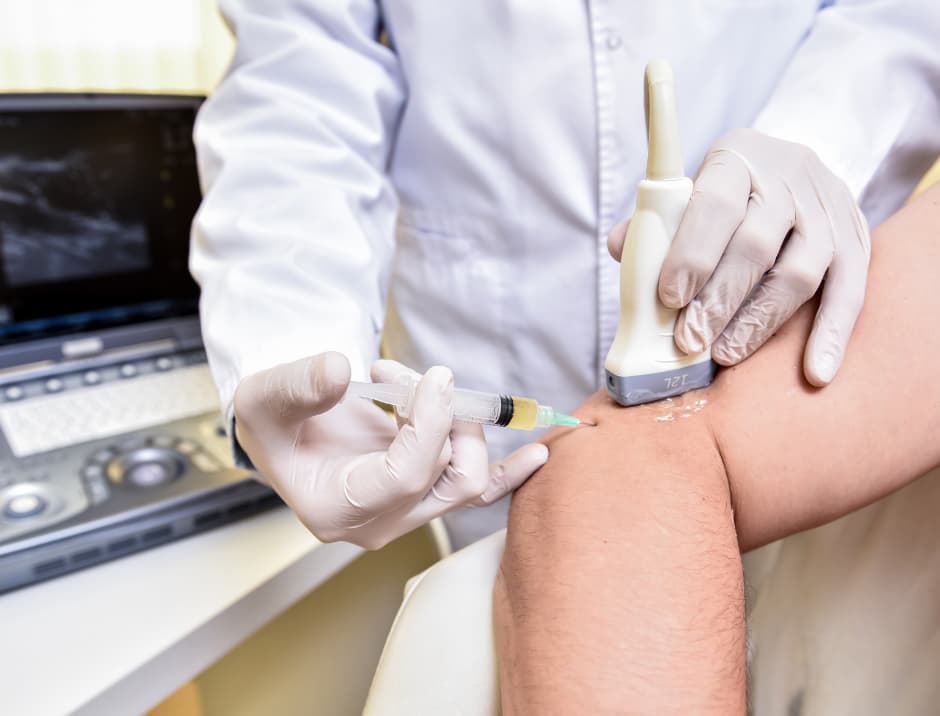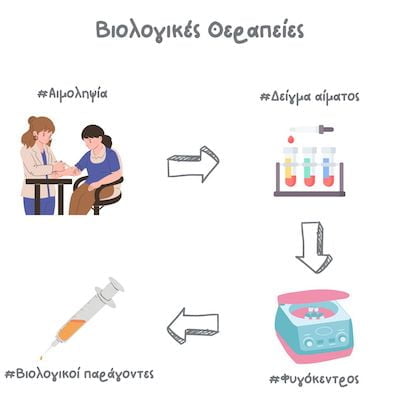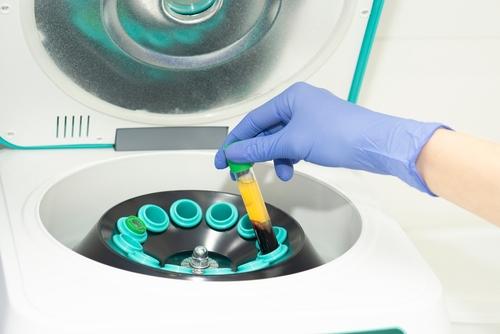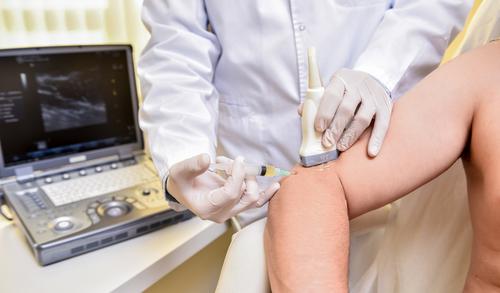Georgios Panagopoulos MD | Orthopaedic Surgeon

Table of contents
What is PRP?
Οι βιολογικές θεραπείες αποτελούν μέρος των λεγόμενων ορθοβιολογικών θεραπειών που έχουν εμφανιστεί στην Ορθοπαιδική τα τελευταία χρόνια. Ο όρος ορθοβιολογικές θεραπείες αναφέρεται σε ουσίες που βρίσκονται φυσιολογικά στον ανθρώπινο οργανισμό και οι οποίες πιστεύεται πως διεγείρουν την επούλωση των βλαβών σε μυς, τένοντες, συνδέσμους, χόνδρο, κλπ. Επιτρέπουν δηλαδή στον οργανισμό να θεραπεύσει τον ίδιο του τον εαυτό. Οι βιολογικοί παράγοντες σήμερα σε εξέλιξη περιλαμβάνουν το PRP, τα βλαστοκύτταρα, καθώς και αυτομοσχεύματα or αλλομοσχεύματα. To PRP (platelet-rich plasma) είναι πλάσμα πλούσιο σε αιμοπετάλια. Τα συμπυκνωμένα αιμοπετάλια στο PRP είναι σε 5 φορές μεγαλύτερη συγκέντρωση από ό,τι στο αίμα. Τα αιμοπετάλια περιέχουν όλους εκείνους τους αυξητικούς παράγοντες που είναι απαραίτητοι για την επούλωση και αναγέννηση των ιστών.

What does the procedure involve?
Η διαδικασία διαρκεί γύρω στα 15 λεπτά και είναι ουσιαστικά ανώδυνη. Ο ιατρός θα πάρει μικρή ποσότητα αίματος (10ml) από μία περιφερική φλέβα και θα τη μεταφέρει σε έναν δοκιμαστικό σωλήνα που θα τοποθετηθεί σε ένα ειδική μηχάνημα που λέγεται φυγόκεντρος. Η φυγόκεντρος περιστρέφεται με υψηλή ταχύτητα, διαχωρίζοντας το αίμα στα συστατικά του στοιχείο. Ο ιατρός θα συλλέξει στη συνέχεια το πλάσμα με τα συγκεντρωμένα αιμοπετάλια και θα το αναμίξει με τοπικό αναισθητικό. Τέλος, γίνεται η έγχυση ή ένεση PRP στην πάσχουσα περιοχή μέσω καθοδήγησης με υπέρηχο.


Who might benefit from PRP?
Το PRP βρίσκει εφαρμογή στις ακόλουθες παθήσεις του μυοσκελετικού:
- Lateral epicondylitis or tennis elbow
- Rotator cuff tendinopathy/partial tears
- Plantar fasciitis
- Achilles tendinopathy
- Patellar tendinopathy
- Knee cartilage defects and osteoarthritis
- Muscle injuries (sprains or tears)
- As an adjuvant during surgery (surgical augmentation) for rotator cuff repairs, achilles repairs, ligament repairs, etc.

Multiple studies have been performed to assess the efficacy of PRP injections for a multitude of conditions. Results are encouraging, but definitive recommendations cannot be made at this stage. The strongest data exist for PRP use in the treatment of tennis elbow and are very promising. PRP is not a solution for everything and there many situations in which is use is not justified. Dr Panagopoulos believes the in the right patient and for the right condition, PRP can relieve symptoms, help with tissue healing, and delay or eliminate the need for surgery
What's the cost of biological treatments?
The cost of the procedure is reasonable. Please contact us for more details.
If you suffer from tendonitis or ligament injury, please schedule a consultation for an expert opinion.
FAQs - Frequently Asked Questions
What's PRP?
PRP is essentially blood plasma with concentrated platelets. Platelets contain in great quantity growth factors that are crucial for initiating the tissue repair and regeneration process.
What does the procedure involve?
A small quantity of blood (10ml) will be taken from you from a vein in your arm. This blood is placed in a tube that is transferred to a machine called centrifuge, that spins it and separates the different blood components. The surgeon will then extract the platelet-rich plasma, mix it with local anaesthetic and inject it in the area of injury under ultrasound guidance.
How long does it take?
The whole procedure takes about 15 minutes.
What are the current indications?
– Tennis/golfer’s elbow -> that's the strongest indication yet
– Tendonitis (achilles, cuff, etc.)
– Plantar fasciitis
– Επικουρικά στο χειρουργείο
Ποιο είναι το κόστος;
Το κόστος της έγχυσης είναι προσιτό. Επικοινωνήστε μαζί μας για περισσότερες πληροφορίες.
Find us
Book an appointment with us today
